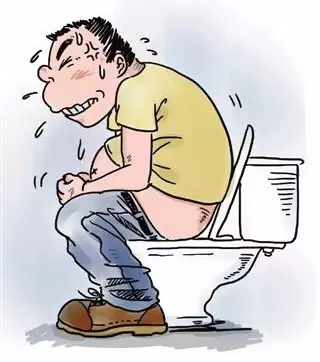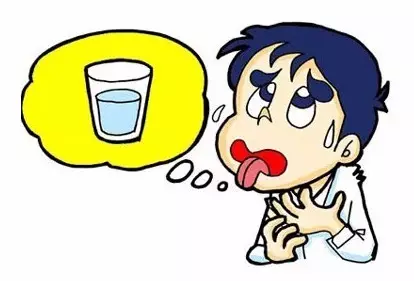
Platform Mission: To lead the healthy development of the industry and empower pharmacies for continuous performance growth!
“Observation, Listening, Inquiry, and Palpation” (望闻问切) is a significant characteristic of Traditional Chinese Medicine (TCM) in diagnosing diseases, among which inquiry is the most fundamental and crucial part of medical diagnosis.In fact, there are some fixed patterns in inquiry; these questions can be asked by anyone and can help understand the patient’s condition, facilitating targeted treatment.So, what should we ask during an inquiry?

1. Inquire about Urination and Defecation
Understand the characteristics, color, odor, timing, volume, and frequency of urination and defecation, as well as the sensations during these processes.
Abnormal Bowel Movements:Difficulty in defecation for several days is termed constipation. Heat excess injuring fluids leads to heat constipation, while cold accumulation results in cold constipation. Qi stagnation causes qi constipation, and qi deficiency leads to deficiency constipation. Unformed or watery stools with increased frequency indicate diarrhea. Loose stools are often due to spleen dysfunction. Abdominal pain with diarrhea at dawn is termed “Five Morning Diarrhea” and is often due to kidney yang deficiency. Abdominal pain with diarrhea that alleviates after defecation is termed food injury diarrhea.
Abnormal Stool Quality:Burning sensation or a feeling of heaviness in the anus during defecation indicates spleen deficiency with qi sinking. Unsatisfactory defecation is often due to liver qi stagnation. Diarrhea with undigested food and pain relief after defecation is often due to food injury. If the stool is yellow and sticky, it often indicates damp-heat accumulation in the large intestine. Frequent, urgent diarrhea with abdominal pain is a symptom of dysentery, often caused by damp-heat obstruction and intestinal qi stagnation. Incontinence of stool is often due to kidney yang deficiency.

Abnormal Urine Volume:Increased urine volume indicates deficiency-cold. Decreased urine volume may be due to heat excess, excessive sweating injuring fluids, or vomiting and diarrhea damaging fluids.
Abnormal Urination Frequency:Increased urination frequency with short, urgent, and painful urination is often due to damp-heat. Prolonged illness with clear, frequent urination at night indicates kidney yang deficiency. Difficulty urinating with dribbling is generally due to damp-heat or blood stasis, while obstruction by stones indicates a solid condition; if due to insufficient kidney yang, it indicates a deficiency condition.
Abnormal Urination Sensation:Painful urination, urgency, and burning sensation are often due to damp-heat descending to the bladder, commonly seen in gonorrhea. Incontinence during sleep indicates kidney qi instability. Confusion with incontinence indicates a critical condition.
2. Inquire about Cold and Heat
The occurrence of cold and heat is mainly determined by the nature of the pathogenic factor and the balance of yin and yang in the body, reflecting the interaction between the body’s righteousness and pathogenicity.
Cold without Heat:The patient feels cold but does not have a fever, indicating a deficiency-cold condition due to insufficient yang qi.
Heat without Cold:The patient has a fever but does not feel cold or is afraid of heat, indicating internal heat syndrome. If high fever is accompanied by thirst for cold drinks, sweating, and constipation, it indicates excess heat syndrome. If there is low-grade fever in the afternoon, accompanied by heat in the palms and soles, night sweats, and flushed cheeks, it indicates internal deficiency heat syndrome.
Chills and Fever:The patient feels cold while having a fever, indicating the initial stage of an external pathogen.
Intermittent Cold and Heat:Cold and heat alternate. Regular alternating cold and heat indicates malaria. Irregular alternating cold and heat, accompanied by pain in the flanks and bitter taste in the mouth, indicates liver and gallbladder disease.

3. Inquire about Sweating
Sweating is related to the balance of yang qi and the loss or gain of body fluids.
No Sweating:External pathogen cold evil, fever, chills, and headache without sweating indicate a solid exterior condition.
Sweating:External wind evil, fever, and chills with sweating indicate a deficiency exterior condition.
Spontaneous Sweating:Sweating with slight activity during the day, often accompanied by fatigue, shortness of breath, and aversion to cold, indicates yang qi deficiency, often due to internal injury.
Night Sweats:Refers to sweating during sleep, accompanied by fever, flushed cheeks, irritability, insomnia, and dry mouth, indicating internal heat due to yin deficiency, often due to internal injury.

4. Inquire about Sleep
Insomnia:Difficulty falling asleep or waking easily during the night, difficulty returning to sleep, or sleeplessness throughout the night, often due to insufficient yin blood and the heart not being nourished. Commonly accompanied by palpitations, vivid dreams, tinnitus, and tidal fever. If insomnia is due to phlegm-fire or food accumulation, it is often accompanied by facial redness, shortness of breath, thirst, and discomfort in the stomach.
Excessive Sleepiness:Intense drowsiness, often falling asleep involuntarily. In older individuals with physical weakness, it often indicates heart and kidney yang deficiency; in overweight individuals, it is often accompanied by abdominal distension and phlegm, indicating spleen deficiency with excessive dampness, preventing the ascent of clear yang.

5. Inquire about Pain
Ask about the location, nature, and intensity of pain to assess the condition.
Headache:Sudden headache, continuous pain, accompanied by chills and fever, often indicates an external pathogenic solid condition. Intermittent headaches with a feeling of pressure, worsening after fatigue, or accompanied by dizziness, often indicate an internal injury deficiency condition.
Chest Pain:Chest pain due to lung heat is often unilateral, accompanied by fever, cough, and thick yellow phlegm; chest obstruction syndrome presents as a feeling of heaviness or stabbing pain in the heart area, recurrent episodes, accompanied by palpitations and shortness of breath.
Liver and Gallbladder Pain:Pain in the flanks and discomfort.
Stomach Pain:Stomach fullness and pain, often accompanied by belching and sour regurgitation.

6. Inquire about Dietary Preferences
Including understanding water intake, preference for hot or cold, appetite and food quantity, and any abnormal taste sensations.
Thirst and Excessive Drinking:Excessive thirst and drinking often indicate fluid damage, commonly seen in heat or dryness syndromes, or excessive sweating, vomiting, or diarrhea. If thirst is accompanied by a preference for cold drinks, it indicates internal heat damaging fluids. Increased urination and weight loss may indicate diabetes.
No Thirst and Low Drinking:No thirst and lack of desire to drink often indicate a cold syndrome. If there is thirst with vomiting after drinking, it often indicates water-dampness stagnation in the stomach. If there is thirst with low drinking and a preference for hot drinks, it often indicates dampness or deficiency-cold syndrome; a preference for cold drinks indicates damp-heat syndrome.

Loss of Appetite and Aversion to Food:Lack of desire to eat or food tasting bland indicates loss of appetite. In new illnesses, this often indicates food injury or external heat. In chronic illnesses, lack of appetite often indicates spleen and stomach deficiency. If there is aversion to food, it is often due to food stagnation or liver-spleen damp-heat.
Excessive Eating and Selective Eating:Excessive eating and easy hunger often indicate stomach fire. If a person who has been unable to eat suddenly overeats, it often indicates impending failure of spleen and stomach qi. Selective eating of raw rice, dirt, or foreign objects indicates parasitic accumulation.
Taste Preferences:Bitter taste indicates liver and gallbladder heat, sour taste indicates gastrointestinal stagnation, foul breath indicates stomach fire, bland taste indicates stomach dampness or deficiency, sweet taste indicates spleen damp-heat, and salty taste indicates kidney deficiency.
In addition to the above inquiry questions, pharmacy staff should also understand the patient’s past medical history, personal history, menstrual history, reproductive history (for females), and family history, and consider them comprehensively.
1. Past Medical History
(1) The patient’s previous health status.
(2) Past diseases (including various infectious diseases), especially those closely related to the current illness. For example, patients with coronary atherosclerotic heart disease should be asked about past hypertension or diabetes. When documenting, care should be taken not to confuse it with the current medical history.
(3) History of trauma, surgery, accidents, and vaccinations.
(4) Allergy history (to medications, foods, and environmental factors).
(5) Major infectious diseases and endemic diseases in the area where the patient lives should also be recorded in the past history.
(6) The order of records is generally arranged chronologically by year and month.
2. Personal History
Personal experiences related to health and disease, including:
(1) Social experiences including birthplace, residence, and duration of stay (especially in epidemic areas and areas with endemic diseases), education level, economic status, and hobbies.
(2) Occupational and working conditions including job type, labor environment, exposure to industrial toxins, and duration.
(3) Habits and preferences including daily routines and hygiene habits, dietary regularity and quality, smoking and alcohol consumption habits and amounts.
(4) Sexual history including any unprotected intercourse, history of gonorrhea, condyloma acuminatum, or chancroid.
3. Menstrual History
Menstrual status of female patients, mainly documenting age of menarche, menstrual cycle, duration of menstruation, volume and color of menstrual blood, menstrual symptoms, presence of dysmenorrhea, leukorrhea, date of last menstruation, date of menopause, age at menopause, etc.
4. Reproductive History
The patient’s reproductive status, including number and age of pregnancies and births, number of induced or spontaneous abortions, presence of premature births, stillbirths, surgical births, puerperal fever, and family planning status. Male patients should document any reproductive system diseases.
5. Family History
Refers to the health status of relevant family members, including:
(1) Age and health status of parents (including grandparents).
(2) Age and health status of spouses.
(3) Age and health status of siblings.
(4) Age and health status of children.
(5) Any family members with similar diseases or hereditary diseases, such as albinism, hemophilia, congenital spherocytosis, diabetes, familial hypothyroidism, mental illness, etc. For deceased direct relatives, inquire about the cause of death and age.
Disclaimer:Source from the internet, for public welfare sharing only. If there is any infringement, please contact for deletion. Any shortcomings are welcome to be pointed out.
Follow the Pharmacy Headlines video account
Recommended by the Pharmacy Classics public account
Recommended by the Combined Medication public account

Click “Read the Original” to learn professional courses

